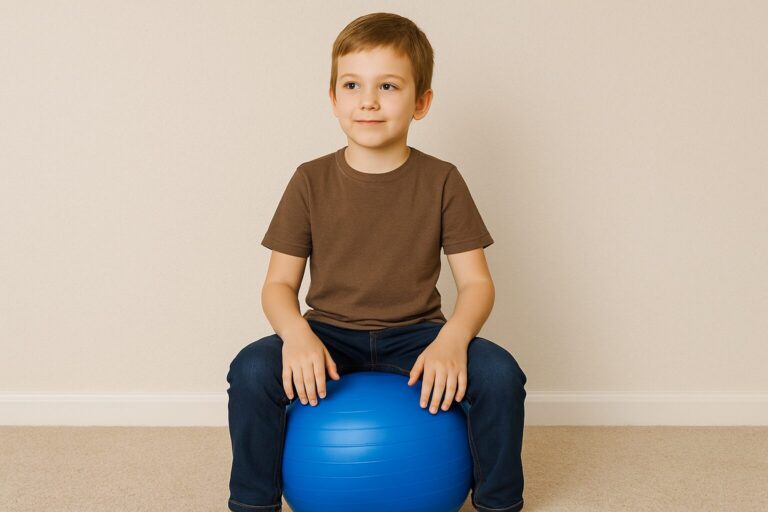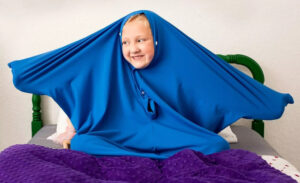Therapy balls—including stability balls, peanut balls, textured massage balls, and lightweight exercise spheres—provide essential movement-based sensory input for autistic children. These tools offer vestibular and proprioceptive stimulation that supports emotional regulation, body awareness, balance, and focus.
🔍 Why Therapy Balls Work for Sensory Regulation
- Vestibular feedback: Rolling, bouncing, or balancing on therapy balls helps regulate the inner ear system and improves spatial awareness.
- Proprioceptive input: Pressure from sitting, leaning, or rolling on balls supports calming and body awareness.
- Motor coordination: Activities such as bouncing or passing promote balance, postural stability, and gross motor development.
- Emotional regulation: Using these balls in sensory breaks can reduce stress and release excess energy.
🛠 How Occupational Therapists Use Therapy Balls
- Rolling the child prone over the ball to provide deep pressure and gentle vestibular input.
- Bouncing while seated or standing to support attention and energy discharge.
- Using peanut-shaped balls for controlled rocking to support core engagement and comfort.
- Introducing weighted or textured balls for tactile feedback and sensory variety.
🛒 Top 3 Therapy Ball Picks for Autistic Children
⭐ 55 cm Stability Therapy Ball
Best for: Core strength, balance, and seated sensory breaks
This large therapy ball provides gentle movement for energy release, focus support, and gross motor play. It can double as a dynamic seat during quiet activities.
🌈 Peanut-Shaped Therapy Ball
Best for: Controlled rolling and vestibular support
The peanut shape provides stability and confidence. It’s particularly helpful for supervised rock-and-roll vestibular play and bilateral coordination.
🧠 Textured Sensory Ball Set (Pack of 8)
Best for: Fine motor tactile play and hand strengthening
This set includes small massage balls with sensory textures, perfect for hand squeezing, tossing, or tabletop tactile input to promote calm and focus.
🎯 How to Use Therapy Balls Safely at Home
- Start with short supervised sessions (5–10 minutes) to build tolerance.
- Use on soft flooring or yoga mats to prevent slipping.
- Choose ball size based on the child’s height—feet should touch the floor when seated.
- Always supervise rolling, bouncing, and seated rocking to ensure safety.
🧠 Activity Ideas with Therapy Balls
- Seated bounce: Sit and bounce gently while listening to calming music.
- Roll-over relaxation: Child lies prone on the ball and is rolled slowly for proprioceptive input.
- Ball pass: Pass the ball back and forth while seated to encourage coordination and focus.
- Cradle rock: Child lies between two peanut balls for secure, calming pressure.
🙋♀️ Frequently Asked Questions
Are therapy balls safe for autistic children?
Yes when used correctly. Use age-appropriate sizes and supervise during movement. Ensure floor surface is non-slip.
What age are therapy balls suitable for?
Most models are safe from age 3 onward. Adjust size and type based on motor skills and coordination levels.
How often should therapy balls be used?
Short daily sessions (5–10 min) are beneficial. They can also be used during sensory breaks or before transitions.
As an Amazon Associate, SensoryGift.com earns from qualifying purchases. Thanks for helping us share sensory support tools for neurodiverse kids.
🔗 References & Supporting Research
- Strides ABA – How Therapy Balls Help Individuals with Autism
- Beyond Care Therapy – Benefits of Sensory Balls for Autism
- Chicago Occupational Therapy – OT Uses for Exercise Balls
- Project Haans – Benefits of Bouncing for Sensory Integration
- Verywell Health – Sensory Integration Therapy and Autism



